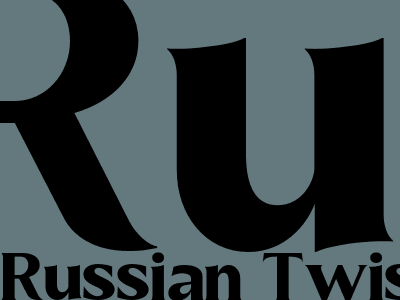
Russian Twist
Getting the Most Out of the Russian Twist: A Comprehensive Guide
Introduction
The Russian twist, a core-strengthening exercise, has gained popularity in fitness routines. This dynamic move effectively targets the abdominal muscles, particularly the obliques, improving stability and reducing the risk of injury. In this comprehensive guide, we will delve into the proper technique, variations, benefits, and safety considerations of the Russian twist.
Benefits of the Russian Twist
*
Core Strengthening: The Russian twist primarily engages the abdominal muscles, including the rectus abdominis, transverse abdominis, and obliques. It strengthens these muscles, improving core stability and posture. *
Improved Balance and Coordination: The rotational movement of the Russian twist enhances balance and coordination by training the body to control its center of mass while in motion. *
Reduced Risk of Injury: A strong core provides a solid foundation for the body, reducing the risk of injuries to the back, hips, and knees. The Russian twist helps strengthen the core muscles, which play a crucial role in stabilizing the spine and pelvis. *
Calorie Burning: The Russian twist is a dynamic exercise that elevates the heart rate and burns calories. It can be incorporated into a circuit training routine or performed as a standalone exercise for weight management.
Proper Technique
1.
Starting Position: Sit on the floor with your knees bent and feet elevated slightly off the ground. Lean back slightly and engage your core by pulling your belly button towards your spine. 2.
Rotation: Clasp your hands together in front of your chest and extend your arms. Rotate your upper body to the right, then to the left, keeping your back straight and your core engaged. 3.
Control: Perform the rotations in a controlled manner, avoiding excessive momentum. Focus on using your core muscles to power the movement and prevent your lower back from arching.
Variations
*
Medicine Ball Russian Twist: Hold a medicine ball in front of your chest while performing the Russian twist. This variation increases the resistance and challenges the core muscles further. *
Weighted Russian Twist: Attach a weight to a rope or cable and hold it with both hands. As you rotate, the weight provides additional resistance, amplifying the muscle activation. *
Plank Jacks with Russian Twist: Start in a plank position with your forearms on the ground and your body forming a straight line from head to heels. Jump your feet out into a wide stance, then jump them back together while simultaneously rotating your upper body to the right. Repeat the movement by rotating to the left.
Safety Considerations
*
Back Pain: Individuals with lower back pain should avoid the Russian twist or perform it with modifications. Consult a healthcare professional if you experience any discomfort during the exercise. *
Proper Form: Maintaining proper form is crucial to prevent injuries. Keep your back straight and avoid arching your lower back. Engage your core throughout the movement to protect your spine. *
Breathing: Remember to breathe regularly during the exercise and exhale as you rotate. Holding your breath can strain your cardiovascular system.
Conclusion
The Russian twist is a highly effective core-strengthening exercise that offers numerous benefits. When performed correctly, it can enhance core stability, improve balance and coordination, reduce the risk of injury, and burn calories. By incorporating variations and following safety precautions, you can maximize the results of the Russian twist while minimizing the risk of injury. Always consult a qualified fitness professional if you have any underlying health conditions or concerns.
Komentar